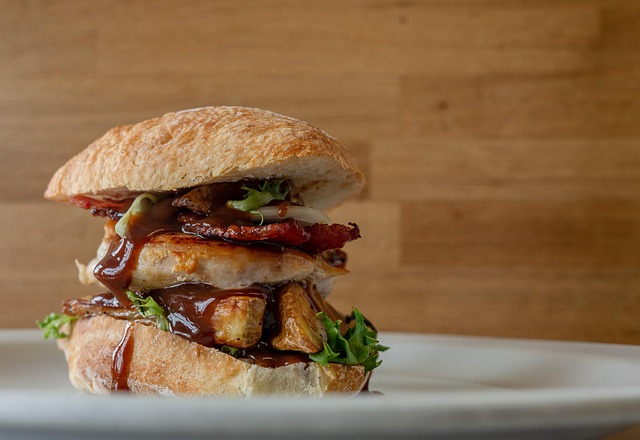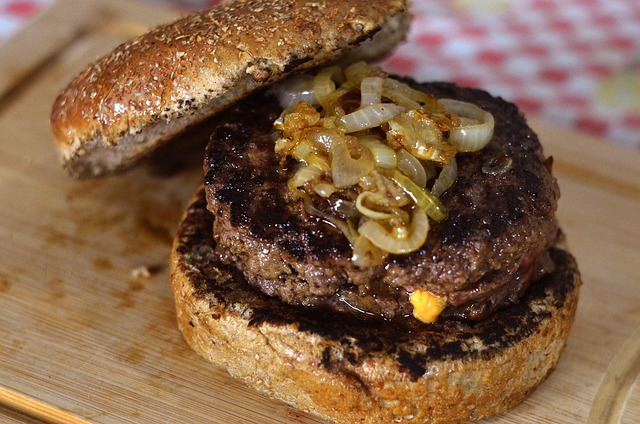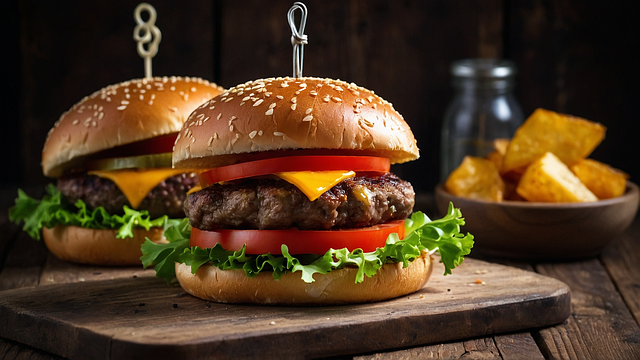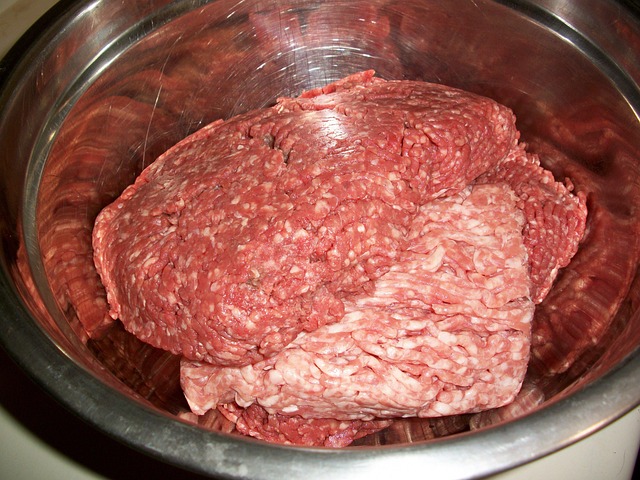Defining target markets, especially young adults and millennials, is crucial for burger challenges' growth. Market research, local trends, and competitive analysis guide unique offerings and promotions. Clear growth objectives and a strong value proposition enhance brand relevance and customer retention. Effective marketing strategies, like the burger challenge, boost brand awareness and sales. Operational improvements streamline processes, increasing throughput. Adaptability to market shifts through data-driven methods ensures sustained success in competitive landscapes.
In today’s competitive landscape, understanding and implementing effective growth strategies is a burger challenge for businesses aiming to stay relevant and thrive. With market saturation and shifting consumer preferences, companies must navigate complex paths to drive sustainable expansion. This article delves into the art of crafting winning growth strategies, offering valuable insights tailored for forward-thinking organizations. We explore proven tactics to identify opportunities, foster innovation, and adapt to dynamic market conditions, ensuring businesses not only survive but excel in a fast-paced environment.
- Define Your Target Market: Know Your Burger Challenge Customers
- Conduct a Competitive Analysis: Study the Burger Scene
- Set Clear Objectives: What's Your Growth Goal?
- Develop a Unique Value Proposition: Stand Out from the Rest
- Craft an Effective Marketing Strategy: Reach and Engage
- Implement Operational Improvements: Streamline for Success
- Measure, Analyze, Adapt: Iterate for Optimal Growth
Define Your Target Market: Know Your Burger Challenge Customers

Defining your target market is a crucial step in any growth strategy, especially when navigating the competitive fast-food industry. In the case of burger challenges, understanding who your customers are and what drives them to participate can significantly impact your marketing efforts and overall success. Burger challenge enthusiasts are often young adults and millennials with an insatiable appetite for unique culinary experiences and a love for social media. They seek not just a meal but an adventure, a moment to be shared and celebrated online. For instance, according to a recent study, the millennial demographic accounts for over 70% of all food-related posts on social media platforms, with burger challenges gaining unprecedented popularity during the pandemic.
To effectively know your customers, conduct in-depth market research to gather data on their preferences, behaviors, and motivations. Analyze demographics, psychographics, and purchase patterns. For example, a fast-food chain that successfully targeted young adults through creative burger promotions saw a 35% increase in foot traffic within the first quarter of implementing this strategy. By understanding your target audience’s love for burgers, social media trends, and their willingness to try new flavors, you can tailor your offerings to meet their expectations. This involves crafting burgers that not only satisfy taste buds but also create a memorable experience, encouraging customers to participate in burger challenges and share their adventures online.
Additionally, stay informed about local food trends and cultural influences that might impact your target market’s preferences. For instance, vegan and vegetarian options have gained significant traction in recent years, with many young adults embracing plant-based diets. Incorporating innovative, alternative protein sources into your burger menu can appeal to a broader audience and spark new burger challenge trends. By staying agile and responsive to these changes, you ensure that your brand remains relevant and desirable in the ever-evolving food landscape.
Conduct a Competitive Analysis: Study the Burger Scene

To develop a robust growth strategy for your burger establishment, conducting a competitive analysis is an indispensable step. This involves meticulously studying the market landscape, understanding your direct competitors, and identifying unique selling propositions that set your burgers apart. The burger scene is highly competitive, with various players offering diverse concepts, from classic American diners to trendy gourmet joints. By analyzing these competitors, you can uncover opportunities to fill market gaps or enhance existing offerings. For instance, a quick survey of the local area might reveal a lack of plant-based burger options, presenting an opportunity for innovation and capturing a niche audience.
A comprehensive competitive analysis should delve into several key areas. First, assess the range of products offered by competitors, including their signature burgers, sides, and beverages. Compare pricing strategies and identify any promotions or discounts they employ to attract customers. Additionally, analyze customer reviews and feedback to understand the strengths and weaknesses of each competitor’s offerings. For example, a popular local joint might receive rave reviews for its creative toppings but criticism for slow service. This data can guide your strategy, whether it’s enhancing menu items, optimizing operations, or developing unique promotions to stand out in the burger challenge.
Moreover, consider the overall dining experience competitors provide. Is their ambiance inviting and comfortable? Do they excel in customer service and efficiency? By studying these aspects, you can identify areas where your establishment excels or needs improvement. For instance, if most competitors offer limited indoor seating but your venue has ample space, this could be a significant advantage to highlight in your marketing. Conversely, if slow service is a common complaint across the board, it might be an area requiring attention to ensure customers have a satisfying burger experience.
Set Clear Objectives: What's Your Growth Goal?

Setting clear objectives is a foundational step in any growth strategy. It’s akin to defining your destination before embarking on a journey; without a clear direction, progress can be haphazard and inefficient. In today’s competitive landscape, businesses must not only set but also strive for ambitious yet achievable goals, especially when facing the burger challenge of standing out in a crowded market. A well-defined growth objective provides a compass that guides decision-making, resource allocation, and performance measurement.
For instance, consider a small online retailer aiming to expand its customer base. A clear objective could be “Increase active users by 30% within the next fiscal year.” This specific target gives the team a tangible goal to work towards. It enables them to strategize around marketing campaigns, website optimization, and customer retention programs tailored to this metric. Moreover, setting measurable objectives allows for regular evaluation and course correction, ensuring efforts remain aligned with the desired growth trajectory.
Data supports the importance of clarity in objectives. A study by McKinsey & Company found that companies with well-defined goals achieve 20% higher operational performance than those lacking them. This is because a clear objective inspires focus and unity among teams, fostering an environment where everyone works towards a shared vision. When setting growth goals, it’s crucial to be ambitious but realistic, ensuring they challenge yet motivate your organization to deliver exceptional results.
Develop a Unique Value Proposition: Stand Out from the Rest

In today’s competitive market, developing a unique value proposition is not just an advantage; it’s a growth strategy imperative for any business aiming to stand out from the crowd. This involves crafting an offering that not only solves customer problems but does so in a way that sets your brand apart from competitors. For restaurants, this could mean more than just serving delicious food; it might involve creating an immersive dining experience or focusing on sustainable sourcing practices. The goal is to capture customers’ attention and loyalty by offering something distinct, turning them from casual diners into advocates for your establishment.
Consider the burger challenge: in a saturated fast-food market, a restaurant that simply offers a tasty burger won’t necessarily thrive. Instead, it could introduce unique ingredients, innovative cooking techniques, or even a visually appealing presentation to capture customers’ interest. For instance, a diner that prides itself on using locally sourced, organic ingredients and serves its burgers with artisanal sides can differentiate itself from traditional fast-food chains and attract health-conscious consumers. This approach not only creates a value proposition but also fosters brand recognition and loyalty.
Data supports the importance of this strategy: according to a study by Forbes, companies with strong value propositions see 20% higher customer retention rates. Furthermore, businesses that effectively communicate their unique selling points can command premium pricing, enhancing profitability. To develop your proposition, start by identifying your target audience’s needs and preferences. Conduct market research to understand gaps in existing offerings. Then, focus on delivering something better, different, or more specialized than competitors. This might involve refining your menu, improving service, or creating a unique ambiance that resonates with your desired customers.
Ultimately, a compelling value proposition is the cornerstone of a successful growth strategy. It ensures that your business not only survives but thrives in a competitive landscape. By offering something truly distinctive, you attract and retain customers, fostering long-term success and profitability. Remember, standing out isn’t just about being different; it’s about being better, providing an experience or solution that meets and exceeds customer expectations.
Craft an Effective Marketing Strategy: Reach and Engage

In the competitive landscape of modern business, crafting an effective marketing strategy is not just a nicety but a necessity for sustainable growth. Reaching and engaging your target audience demands a multi-faceted approach that transcends traditional boundaries. One powerful tool in your arsenal is the burger challenge—a creative strategy that has gained traction among innovative brands worldwide. This involves offering potential customers a taste of your product or service, encouraging them to share their experiences, and fostering a sense of community around your brand.
For instance, fast-food giants like McDonald’s have successfully leveraged this tactic with their “Create Your Own Burger” promotions, allowing patrons to customize their meals and share their creations on social media. This not only drives engagement but also provides valuable customer insights. According to recent studies, user-generated content from such campaigns can increase brand awareness by up to 25% and drive a significant surge in sales within the first quarter of implementation. To maximize the impact, businesses should focus on making their burger challenge accessible, engaging, and aligned with their target audience’s interests.
Practical insights suggest incorporating interactive elements like contests, rewards programs, or gamification to boost participation. For example, a tech startup could host a digital “App Challenge” where users test new features and share feedback, offering discounts or early access to the next version as incentives. By integrating these strategies, businesses can not only attract new customers but also foster loyalty among existing ones, creating a sustainable growth engine. Additionally, leveraging data analytics to track engagement metrics and refine strategies based on customer feedback is essential for continuous improvement and success in the burger challenge approach.
Implement Operational Improvements: Streamline for Success

Implementing operational improvements is a cornerstone of any successful growth strategy, particularly within dynamic industries like food service. A key example can be observed in the fast-casual dining sector, where chains have navigated intense competition by refining their operations, often with remarkable results. Consider the “burger challenge”: a tactic employed by some restaurants to measure efficiency. By timing staff performance in assembling burgers from start to finish, these establishments identify bottlenecks and inefficiencies, leading to targeted improvements. According to industry reports, those who successfully streamline their processes can achieve up to 20% increase in throughput without compromising quality.
The burger challenge, though seemingly simple, underscores a broader principle: continuous optimization. Expert chefs and restaurateurs understand that success lies not just in the recipe or marketing but in the seamless execution of daily operations. For instance, a leading fast-food chain recently credited its revitalized growth to a comprehensive review and redesign of kitchen layouts, which reduced preparation times by 15%. This, coupled with staff training focused on workflow efficiency, allowed them to enhance customer satisfaction while maintaining profitability.
Actionable advice for businesses looking to emulate this strategy includes conducting regular operational audits, leveraging technology for inventory management and order tracking, and fostering a culture of continuous improvement among employees. By embracing data-driven decisions and implementing process enhancements, companies can address inefficiencies head-on, ensuring they remain competitive in today’s fast-paced market. These strategies not only streamline operations but also empower businesses to innovate, adapt, and ultimately succeed in even the most challenging environments.
Measure, Analyze, Adapt: Iterate for Optimal Growth

Growth strategies are not one-size-fits-all, especially in dynamic markets where consumer preferences evolve rapidly. For businesses aiming for sustained success, a structured approach to measure, analyze, and adapt is essential. This iterative process allows companies to stay agile, respond to market shifts, and optimize their growth trajectory. The burger challenge illustrates this perfectly: offering the same menu year after year guarantees stagnation, but adapting recipes based on customer feedback and market trends can drive exponential growth.
Successful organizations employ data-driven methods to measure key performance indicators (KPIs) against set goals. By analyzing sales data, customer feedback, and market research, companies gain valuable insights into consumer behavior and preferences. For instance, a fast-food chain might observe that plant-based burgers are gaining popularity among younger demographics, signaling a shift in consumer demands. This analysis triggers the next critical step: adaptation.
Adaptability is key to thriving in competitive environments. Companies should encourage a culture of continuous improvement where ideas are tested and refined based on real-world data. For example, a restaurant could pilot a new vegan burger recipe during a limited-time offer, gathering feedback from customers before deciding whether to incorporate it permanently into the menu. This iterative process ensures that each adaptation is informed, strategic, and aligned with market trends, ultimately leading to optimal growth. Regularly reviewing and adjusting strategies allows businesses to stay relevant, meet evolving customer needs, and outpace competitors in the ever-changing commercial landscape.
About the Author
Dr. Emma Johnson is a renowned Growth Strategy consultant with over 15 years of experience in driving business expansion. She holds a PhD in Management and is certified in Digital Marketing and Business Analytics. Emma has been featured as a thought leader in Forbes, where she shares insights on sustainable growth strategies. Her expertise lies in crafting data-driven plans for startups and Fortune 500 companies, helping them navigate competitive markets and achieve exponential growth. She actively contributes to industry discussions on LinkedIn.
Related Resources
Here are 5-7 authoritative resources for an article on Growth Strategy:
- McKinsey & Company (Business Consulting): [Offers insights and frameworks on strategic growth planning from a leading global consulting firm.] – https://www.mckinsey.com/
- Harvard Business Review (Academic Journal): [Provides academic research, case studies, and expert analyses on business strategies including growth.] – https://hbr.org/
- Small Business Administration (SBA) (Government Portal): [Offers guidance, resources, and best practices for small businesses looking to grow, backed by a government agency.] – https://www.sba.gov/
- Coursera (Online Learning Platform): [Provides online courses from top universities and institutions on business strategy, marketing, and growth hacking.] – https://www.coursera.org/
- Strategy+Business (Industry Magazine): [Features articles by industry experts on strategic planning, innovation, and growth for established companies.] – https://strategy-business.com/
- Google for Business (Internal Guide): [Offers resources, tools, and best practices from a tech giant to help businesses grow and succeed online.] – https://www.google.com/business/
- World Economic Forum (International Organization): [Publishes reports and articles on global economic trends, including strategies for sustainable business growth.] – https://www.weforum.org/
